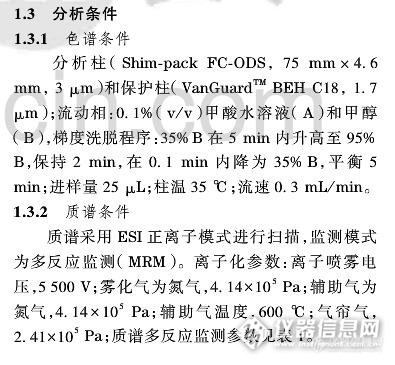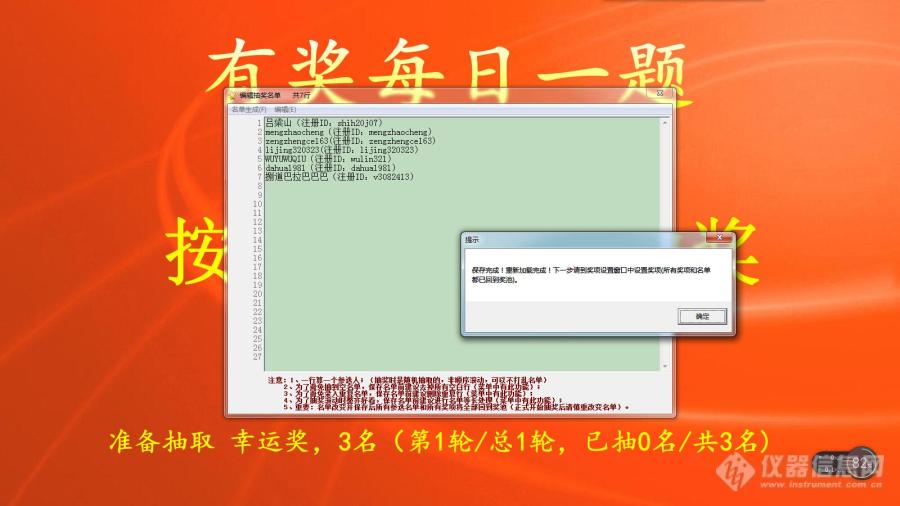[align=left][font='times new roman'][size=18px]S[/size][/font][font='times new roman'][size=18px]il[/size][/font][font='times new roman'][size=18px]-P-C12[/size][/font][font='times new roman'][size=18px]色谱柱分离硫脲类化合物[/size][/font][font='times new roman'][size=18px]/[/size][/font][font='times new roman'][size=18px]苯酚类化合物[/size][/font][font='times new roman'][size=18px]/[/size][/font][font='times new roman'][size=18px]磺胺类化合物[/size][/font][/align][font='times new roman'][size=16px]为了考察[/size][/font][font='times new roman'][size=16px]Sil[/size][/font][font='times new roman'][size=16px]-P-C12[/size][/font][font='times new roman'][size=16px]色谱柱的分离性能,选取了七种小分子化合物[/size][/font][font='times new roman'][size=16px]——[/size][/font][font='times new roman'][size=16px]硫脲类、苯酚类、磺胺类、酰胺类、黄酮类、核苷[/size][/font][font='times new roman'][size=16px]/[/size][/font][font='times new roman'][size=16px]核酸碱基类和烷基苯类。首先是三种硫脲类化合物[/size][/font][font='times new roman'][size=16px],[/size][/font][font='times new roman'][size=16px]图[/size][/font][font='times new roman'][size=16px]1[/size][/font][font='times new roman'][size=16px]为[/size][/font][font='times new roman'][size=16px]二乙基硫脲、亚乙基硫脲和烯丙基硫脲[/size][/font][font='times new roman'][size=16px]的色谱分离图。以乙腈[/size][/font][font='times new roman'][size=16px]-[/size][/font][font='times new roman'][size=16px]水([/size][/font][font='times new roman'][size=16px]97[/size][/font][font='times new roman'][size=16px]:[/size][/font][font='times new roman'][size=16px]3[/size][/font][font='times new roman'][size=16px],[/size][/font][font='times new roman'][size=16px]v/v[/size][/font][font='times new roman'][size=16px])进行洗脱,三种物质可在[/size][/font][font='times new roman'][size=16px]6 min[/size][/font][font='times new roman'][size=16px]内达到基线分离,分离度分别为[/size][/font][font='times new roman'][size=16px]9.21[/size][/font][font='times new roman'][size=16px]和[/size][/font][font='times new roman'][size=16px]5.04[/size][/font][font='times new roman'][size=16px],拖尾因子[/size][/font][font='times new roman'][size=16px]分别为[/size][/font][font='times new roman'][size=16px]1[/size][/font][font='times new roman'][size=16px].07[/size][/font][font='times new roman'][size=16px]、[/size][/font][font='times new roman'][size=16px]1[/size][/font][font='times new roman'][size=16px].45[/size][/font][font='times new roman'][size=16px]和[/size][/font][font='times new roman'][size=16px]1[/size][/font][font='times new roman'][size=16px].22[/size][/font][font='times new roman'][size=16px],最高理论塔板数为[/size][/font][font='times new roman'][size=16px]6[/size][/font][font='times new roman'][size=16px]1[/size][/font][font='times new roman'][size=16px],[/size][/font][font='times new roman'][size=16px]1[/size][/font][font='times new roman'][size=16px]00[/size][/font][font='times new roman'][size=16px] N/[/size][/font][font='times new roman'][size=16px]m[/size][/font][font='times new roman'][size=16px]。[/size][/font][align=center][img]" style="max-width: 100% max-height: 100% [/img][/align][align=center][font='times new roman']图[/font][font='times new roman']1[/font][font='times new roman'] [/font][font='times new roman'] [/font][font='times new roman']硫脲类物质在[/font][font='times new roman']Sil-P-C12[/font][font='times new roman']色谱柱中的分离谱图[/font][/align][align=center][font='times new roman']色谱条件:流动相,乙腈[/font][font='times new roman']-[/font][font='times new roman']水[/font][font='times new roman']([/font][font='times new roman']97:3[/font][font='times new roman'],[/font][font='times new roman']v/v[/font][font='times new roman']);检测波长,[/font][font='times new roman']214 nm[/font][font='times new roman'];流速,[/font][font='times new roman']1.0 mL/min[/font][/align][align=center][font='times new roman']分析物:[/font][font='times new roman']1. [/font][font='times new roman']二乙基硫脲;[/font][font='times new roman']2. [/font][font='times new roman']亚乙基硫脲;[/font][font='times new roman']3. [/font][font='times new roman']烯丙基硫脲[/font][/align][align=center][font='times new roman']Separation chromatogram of thiocarbamides on the Sil-P-C12 column[/font][/align][align=center][font='times new roman']Chromatographic conditions: mobile phase, ACN-H[/font][font='times new roman'][sub][size=13px]2[/size][/sub][/font][font='times new roman']O (97:3, v/v) detection wavelength, 214 nm flow rate, 1.0 mL/min[/font][/align][align=center][font='times new roman']Analytes: 1. diethyl thiourea 2. ethylene thiourea 3. allylthiourea[/font][/align][align=left][font='times new roman'][size=18px]3.3.4 S[/size][/font][font='times new roman'][size=18px]il[/size][/font][font='times new roman'][size=18px]-P-C12[/size][/font][font='times new roman'][size=18px]色谱柱分离苯酚类化合物[/size][/font][/align][font='times new roman'][size=16px]采用苯酚类化合物进一步考察了[/size][/font][font='times new roman'][size=16px]Sil[/size][/font][font='times new roman'][size=16px]-P-C12[/size][/font][font='times new roman'][size=16px]色谱柱的分离性能。[/size][/font][font='times new roman'][size=16px]图[/size][/font][font='times new roman'][size=16px]2[/size][/font][font='times new roman'][size=16px]为[/size][/font][font='times new roman'][size=16px]对甲酚、对氯苯酚、双酚[/size][/font][font='times new roman'][size=16px]A[/size][/font][font='times new roman'][size=16px]、对乙酰氨基酚和[/size][/font][font='times new roman'][size=16px]2[/size][/font][font='times new roman'][size=16px]-[/size][/font][font='times new roman'][size=16px]羟基苯砜五种苯酚类化合物[/size][/font][font='times new roman'][size=16px]的色谱分离图。以乙腈[/size][/font][font='times new roman'][size=16px]-[/size][/font][font='times new roman'][size=16px]水([/size][/font][font='times new roman'][size=16px]9[/size][/font][font='times new roman'][size=16px]7:3[/size][/font][font='times new roman'][size=16px],[/size][/font][font='times new roman'][size=16px]v/v[/size][/font][font='times new roman'][size=16px])进行洗脱,[/size][/font][font='times new roman'][size=16px]五[/size][/font][font='times new roman'][size=16px]种物质可在[/size][/font][font='times new roman'][size=16px]8[/size][/font][font='times new roman'][size=16px] min[/size][/font][font='times new roman'][size=16px]内达到基线分离,[/size][/font][font='times new roman'][size=16px]分离度分别为[/size][/font][font='times new roman'][size=16px]2.08[/size][/font][font='times new roman'][size=16px]、[/size][/font][font='times new roman'][size=16px]6[/size][/font][font='times new roman'][size=16px].05[/size][/font][font='times new roman'][size=16px]、[/size][/font][font='times new roman'][size=16px]4[/size][/font][font='times new roman'][size=16px].86[/size][/font][font='times new roman'][size=16px]和[/size][/font][font='times new roman'][size=16px]1[/size][/font][font='times new roman'][size=16px]5.63[/size][/font][font='times new roman'][size=16px],最高理论塔板数可达[/size][/font][font='times new roman'][size=16px]7[/size][/font][font='times new roman'][size=16px]7[/size][/font][font='times new roman'][size=16px],900[/size][/font][font='times new roman'][size=16px] N/[/size][/font][font='times new roman'][size=16px]m[/size][/font][font='times new roman'][size=16px],且色谱图峰型良好,[/size][/font][font='times new roman'][size=16px]拖尾因子[/size][/font][font='times new roman'][size=16px]分别为[/size][/font][font='times new roman'][size=16px]1[/size][/font][font='times new roman'][size=16px].09[/size][/font][font='times new roman'][size=16px]、[/size][/font][font='times new roman'][size=16px]1[/size][/font][font='times new roman'][size=16px].07[/size][/font][font='times new roman'][size=16px]、[/size][/font][font='times new roman'][size=16px]0[/size][/font][font='times new roman'][size=16px].94[/size][/font][font='times new roman'][size=16px]、[/size][/font][font='times new roman'][size=16px]0.97[/size][/font][font='times new roman'][size=16px]和[/size][/font][font='times new roman'][size=16px]0[/size][/font][font='times new roman'][size=16px].93[/size][/font][font='times new roman'][size=16px]。[/size][/font][align=center][img]" style="max-width: 100% max-height: 100% [/img][/align][align=center][font='times new roman']图[/font][font='times new roman']2[/font][font='times new roman'] [/font][font='times new roman']苯酚类物质在[/font][font='times new roman']Sil-P-C12[/font][font='times new roman']色谱柱中的分离谱图[/font][/align][align=center][font='times new roman']色谱条件:流动相,乙腈[/font][font='times new roman']-[/font][font='times new roman']水[/font][font='times new roman']([/font][font='times new roman']97:3[/font][font='times new roman'],[/font][font='times new roman']v/v[/font][font='times new roman']);检测波长,[/font][font='times new roman']214 nm[/font][font='times new roman'];流速,[/font][font='times new roman']1.0 mL/min[/font][/align][align=center][font='times new roman']分析物:[/font][font='times new roman']1. 4-[/font][font='times new roman']叔辛基苯酚;[/font][font='times new roman']2. [/font][font='times new roman']对甲酚;[/font][font='times new roman']3. [/font][font='times new roman']双酚[/font][font='times new roman']A[/font][font='times new roman'];[/font][font='times new roman']4. [/font][font='times new roman']对乙酰氨基酚;[/font][font='times new roman']5. 2-[/font][font='times new roman']羟基苯砜[/font][/align][align=center][font='times new roman'] [/font][font='times new roman'] Separation chromatogram of phenols on the Sil-P-C12 column[/font][/align][align=center][font='times new roman']Chromatographic conditions: mobile phase, ACN-H[/font][font='times new roman'][sub][size=13px]2[/size][/sub][/font][font='times new roman']O (97:3, v/v) detection wavelength, 214 nm flow rate, 1.0 mL/min[/font][/align][align=center][font='times new roman']Analytes: 1. 4-[/font][font='times new roman']tert[/font][font='times new roman']-octylphenol 2. [/font][font='times new roman']p[/font][font='times new roman']-cresol 3. bisphenol A 4. acetaminophen 5. 2-hydroxyphenyl sulfone[/font][/align][align=left][font='times new roman'][size=18px]Sil-P-C12[/size][/font][font='times new roman'][size=18px]色谱柱分离磺胺类化合物[/size][/font][/align][font='times new roman'][size=16px]选取磺胺类化合物对[/size][/font][font='times new roman'][size=16px]S[/size][/font][font='times new roman'][size=16px]il[/size][/font][font='times new roman'][size=16px]-P-C12[/size][/font][font='times new roman'][size=16px]色谱柱的分离性能进行进一步评价。图[/size][/font][font='times new roman'][size=16px]3[/size][/font][font='times new roman'][size=16px]为[/size][/font][font='times new roman'][size=16px]磺胺甲恶唑[/size][/font][font='times new roman'][size=16px]、[/size][/font][font='times new roman'][size=16px]磺胺二甲基嘧啶[/size][/font][font='times new roman'][size=16px]、[/size][/font][font='times new roman'][size=16px]乙酰唑胺[/size][/font][font='times new roman'][size=16px]和[/size][/font][font='times new roman'][size=16px]磺胺噻唑[/size][/font][font='times new roman'][size=16px]的分离谱图。[/size][/font][font='times new roman'][size=16px]以乙腈[/size][/font][font='times new roman'][size=16px]-[/size][/font][font='times new roman'][size=16px]水([/size][/font][font='times new roman'][size=16px]97[/size][/font][font='times new roman'][size=16px]:[/size][/font][font='times new roman'][size=16px]3[/size][/font][font='times new roman'][size=16px],[/size][/font][font='times new roman'][size=16px]v/v[/size][/font][font='times new roman'][size=16px])进行洗脱,[/size][/font][font='times new roman'][size=16px]四[/size][/font][font='times new roman'][size=16px]种物质可在[/size][/font][font='times new roman'][size=16px]6[/size][/font][font='times new roman'][size=16px] min[/size][/font][font='times new roman'][size=16px]内达到基线分离,分离度分别为[/size][/font][font='times new roman'][size=16px]3.29[/size][/font][font='times new roman'][size=16px]、[/size][/font][font='times new roman'][size=16px]1[/size][/font][font='times new roman'][size=16px]1[/size][/font][font='times new roman'][size=16px].[/size][/font][font='times new roman'][size=16px]41[/size][/font][font='times new roman'][size=16px]和[/size][/font][font='times new roman'][size=16px]3[/size][/font][font='times new roman'][size=16px].26[/size][/font][font='times new roman'][size=16px],[/size][/font][font='times new roman'][size=16px]理[/size][/font][font='times new roman'][size=16px]论塔板数[/size][/font][font='times new roman'][size=16px]均大于[/size][/font][font='times new roman'][size=16px]5[/size][/font][font='times new roman'][size=16px]0[/size][/font][font='times new roman'][size=16px],[/size][/font][font='times new roman'][size=16px]000 N/[/size][/font][font='times new roman'][size=16px]m[/size][/font][font='times new roman'][size=16px],且色谱图峰型良好,拖尾因子分别为[/size][/font][font='times new roman'][size=16px]1.10[/size][/font][font='times new roman'][size=16px]、[/size][/font][font='times new roman'][size=16px]1[/size][/font][font='times new roman'][size=16px].03[/size][/font][font='times new roman'][size=16px]、[/size][/font][font='times new roman'][size=16px]0[/size][/font][font='times new roman'][size=16px].94[/size][/font][font='times new roman'][size=16px]和[/size][/font][font='times new roman'][size=16px]0[/size][/font][font='times new roman'][size=16px].96[/size][/font][font='times new roman'][size=16px]。[/size][/font][align=center][img]" style="max-width: 100% max-height: 100% [/img][/align][align=center][font='times new roman']图[/font][font='times new roman']3[/font][font='times new roman'] [/font][font='times new roman']磺胺类物质在[/font][font='times new roman']Sil-P-C12[/font][font='times new roman']色谱柱中的分离谱图[/font][/align][align=center][font='times new roman']色谱条件:流动相,乙腈[/font][font='times new roman']-[/font][font='times new roman']水[/font][font='times new roman']([/font][font='times new roman']97:3[/font][font='times new roman'],[/font][font='times new roman']v/v[/font][font='times new roman']);检测波长,[/font][font='times new roman']254 nm[/font][font='times new roman'];流速,[/font][font='times new roman']1.0 mL/min[/font][/align][align=center][font='times new roman']分析物:[/font][font='times new roman']1. [/font][font='times new roman']磺胺甲恶唑;[/font][font='times new roman']2. [/font][font='times new roman']磺胺二甲基嘧啶;[/font][font='times new roman']3. [/font][font='times new roman']乙酰唑胺;[/font][font='times new roman']4. [/font][font='times new roman']磺胺噻唑[/font][/align][align=center][font='times new roman']Fig[/font][font='times new roman'].3[/font][font='times new roman'] Separation chromatogram of sulfonamides on the Sil-P-C12 column[/font][/align][align=center][font='times new roman']Chromatographic conditions: mobile phase, ACN-H[/font][font='times new roman'][sub][size=13px]2[/size][/sub][/font][font='times new roman']O (97:3, v/v) detection wavelength, 254 nm flow rate, 1.0 mL/min[/font][/align][align=center][font='times new roman']Analytes: 1. sulfamethoxazole 2. sulfamethazine 3. acetazolamide [/font][font='times new roman'] [/font][font='times new roman']4. sulfathiazole[/font][/align]
有没有大神做车内空气全谱分析或者车内硫类和胺类化合物测试的??而且是用热脱附GCMS做的??想咨询这方面的问题,私信我,有偿咨询!!!
水质 苯胺类化合物的测定HJ822-2017 净化过程中分别用3次洗脱溶液洗脱,三次的洗脱溶液中分别是哪些物质,苯胺在第几次洗脱液中
GB 5009.26-2016 食品中亚硝胺类化合物的测定,第一法中是只测一种亚硝胺化合物的含量吗?

看到网友提出苯胺类化合物不好分离,看到文献上有《液相色谱-串联质谱法测定水中14种苯胺类化合物的测定》分离效果很好。http://www.docin.com/p-1193936692.htmlhttp://ng1.17img.cn/bbsfiles/images/2016/01/201601211744_583093_1645480_3.jpg
如题,苯胺类化合物目前国内外标准都有哪些?
[em34] 求助季胺盐类化合物分析条件,急切等待,是否需要缓冲盐啊柱温啊,或者改进剂之类的????条件怎么优化???
最近想做水中苯胺类化合物的测定,参考的标准是 HJ 822-2017 水质苯胺类化合物的测定 [url=https://insevent.instrument.com.cn/t/Mp]气相色谱[/url]-质谱法。在看这个方法的时候有一点疑问,在前处理的净化步骤时,有一条说是“[color=#ff0000]对于较为清洁的地表水、地下水、海水、生活污水以及背景干扰低的工业废水可省略净化步骤[/color]”。有点下面几点疑问:1.怎么判定背景干扰值的高与低呢?2.会对这个方法有干扰的物质有哪些呢?还请做过这个方法的前辈给指点一些,先在这儿谢谢啦。
我们当地把苯胺类化合物当作入刑证据,所以对水样的采集,比较敏感看了GB 11889-89,只说用硬质玻璃瓶作为容器,在4度下保存可存放2周没说调pH的事情,是否说明样品pH对其没影响?
有谁做过空[url=https://insevent.instrument.com.cn/t/bp][color=#3333ff]气质[/color][/url]量苯胺类化合物的测定盐酸萘乙二胺分光光度法的,标准曲线的吸光度数据大概是多少?
请问有做过脂肪族胺类化合物的吗?如三甲胺、环己胺等,用的什么柱子?
GB11889-89 水质 苯胺类化合物的测定中提到在酸性条件下测定时苯酚含量高于200mg/L时,对本方法有正干扰,不知道哪位大侠有遇到这种情况,在不知是否含有苯酚的情况下按照标准的方法进行测试会出现些什么情况?比如显色颜色不对?还是其他?
有一个亚胺类化合物(标样)用甲醇和水作流动相,出现了两个色谱峰,而用乙腈和水却只有一个峰。请问各位这是为什么?难道是甲醇与亚胺反应?谢谢!
[url=https://insevent.instrument.com.cn/t/bp][color=#3333ff]气质联用仪[/color][/url]分析水质苯胺类化合物(HJ822)时,净化用的三种洗脱液是合并后再浓缩么?
亚硝胺的致癌作用已经清楚地在动物试验中得以证明,同时这类化合物被一些国际组织怀疑对人体有致癌作用,这些组织包括国际癌症研究总署,加拿大卫生署和美国国家毒理学规划处。这些化合物可能存在于环境空气中,这源于直接排放或者源于仲胺间或叔胺间在大气层中发生反应。在橡胶工业区内所检测出的亚硝胺浓度为人类环境中最高 这类化合物还存在于烟草烟雾中。美国国家职业安全和健康研究所(NIOSH) 已经开发出2522 方法,用于捕集和分析空气中的亚硝胺类化合物。然而,该方法使用的空气采样器需要较大的样品体积且采样时间长,亚硝胺还必须用溶剂再次提取,从而导致整个方法缓慢而冗长。[url=https://insevent.instrument.com.cn/t/Mp][color=#3333ff]气相色谱[/color][/url](GC) 和[url=https://insevent.instrument.com.cn/t/Mp][color=#3333ff]气相色谱[/color][/url]/质谱联用仪(GC/MS) 经常被用于测定亚硝胺。然而亚硝胺热稳定性差,所以检测灵敏度受限于[url=https://insevent.instrument.com.cn/t/Mp][color=#3333ff]气相色谱[/color][/url]进样器的高温。本应用简报描述了利用创新型安捷伦微吸附采样器(CTS)、热分离进样杆(TSP) 和Agilent 5975T 低热容[url=https://insevent.instrument.com.cn/t/bp][color=#3333ff]气质联用仪[/color][/url]建立起一种灵敏的空气亚硝胺检测方法。该方法快速,经济且易于使用,能够从大体积空气中捕获分析物,因此推测方法检测限(MDL) 低于1 ng。实验部分试剂和标准品亚硝胺类化合物标准品从Supelco公司获得,EPA 8270 亚硝胺混合物,浓度为2000 ng/μL(货号48489),六种亚硝胺化合物被检测(表1)。[img]http://img.vogel.com.cn/2014/0227/0944313156.png[/img]仪器这个方法是利用配有分流/不分流进样口的Agilent 5975T GC/MS系统开发而成,CTS(部件号G1181A)用于空气中样品的收集,TSP(部件号G4381A)安装在分流/不分流进样器上用于样品脱附。表2 列出了仪器使用条件。[img]http://img.vogel.com.cn/2014/0227/0947357839.png[/img]样品前处理标准品在空气中进行稀释,利用静态稀释瓶技术将其贮存在5 L 的玻璃瓶内,玻璃瓶事先已用纯氮吹扫5 分钟。将10 μL的2000 ng/μL的亚硝胺混合物注入瓶中后,让该样品在室温平衡4 小时使其充分气化,最终浓度为4000 ng/L。稀释样品是由贮存物制备而成,通过分别抽取2、60、100 和200 mL 蒸气到不同的1L 瓶中制成系列工作标准品,其浓度分别为8.0、240、400 和800 ng/L。结果与讨论CTS 操作CTS 包含一个气泵(流速范围10-300 mL/min)、一个手持式采样头和一个适配器。采样头可以容纳六根相同或不同类型的捕集柱。该方法使用了六根内径为530 μm的PoraPLOT Q 柱。TSP用于直接脱附CTS 捕集的样品。每根捕集毛细管置于一次性微量瓶中,然后放入TSP。TSP 然后被插入5975T LTM GC/MS 一个加热的分流/不分流进样口中。捕集柱被迅速而有效地脱附到GC进样器中。采集样品是通过将CTS 头直接插入瓶嘴完成的,同时捕集柱戳穿密封膜而不容许外部气体进入瓶内。校准标准品的制备是通过使用CTS 分别从240、400 和800 ng/L 的工作标准品的瓶中泵取200 mL 气体。另外,通过CTS 从4000 ng/L 的工作标准品中泵取100、200和400 mL 的气体制备成三个独立的样品。最后将这些制备好后的校准水平为48、80、160、400、800 和1600 ng的亚硝胺标准品混合物用于GC/MS 分析。CTS 性能对CTS 收集的400 ng亚硝胺标准样品进行分析,其色谱图上仅呈现了尖锐的亚硝胺色谱峰,而没有其他主要成分信息。该实验证明CTS 具有浓缩和定量转移亚硝胺而不引入污染物或伪迹的能力(图1)。这是一个收效显著的结果,因为考虑到亚硝胺化合物的高活性,其能在样品前处理过程中产生相互作用。定量准确性利用CTS 制备的校准样品用于建立校准曲线来分析混合标样中的六种亚硝胺。六种亚硝胺的所有相关系数(R2) ? 0.990,线性范围48 至1600 ng(表3)。图2 为所有六种化合物的校准曲线。当高于2000 ng或低于48 ng时校准曲线将不成线性。[img]http://img.vogel.com.cn/2014/0227/0949198654.png[/img][img]http://img.vogel.com.cn/2014/0227/0950015814.png[/img][img]http://img.vogel.com.cn/2014/0227/0951022218.png[/img]灵敏度和选择性这个方法能够用于检测低至8 ng/L 的气体浓度,通过泵取500 mL工作标准品,使注入GC/MS 的每种亚硝胺具有4 ng。所有的化合物呈现较好的信噪比并且没有显著性干扰(图3)。CTS 在采样过程中能够去除空气中的一些干扰物质,使后续分析具有一定的选择性。CTS 也可以通过泵取125 mL 的8 ng/L 工作标准品来捕集1.0 ng的亚硝胺混合标样。在提取离子流色谱图中,所有化合物的信噪比范围为3 到9,使方法检出限低于1 ng变为可能。因为CTS 能有效从大体积样品中捕集这类化合物,因此能够用于分析痕量水平的亚硝胺。方法回收率通过液体进样校准,在200 ng水平的NDBA 回收率为100%。由于采用TSP 的液体进样方式会导致由于溶剂的瞬间气化而引起高挥发性化合物的微量损失,因此其他5 种化合物的回收率会高于100%。其他亚硝胺的回收率范围为105.0% 至125.5%。[img]http://img.vogel.com.cn/2014/0227/0951381337.png[/img]结论这款创新型安捷伦微吸附采样器(CTS) 能够提供有用、经济有效的数据用于挥发性亚硝胺的筛查、日常监测和在一个很宽浓度范围内的定量分析。这个采样装置使用非常简单和灵活,对高浓度空气样品允许小体积采样,对低浓度空气样品允许大体积采样。现场采样能在数秒到数分钟内完成。CTS 与TSP 和车载式5975TLTM GC/MS 搭配提供了一个灵敏的分析系统用于空气样品的分析。这个系统非常适合各种应用领域,包括在筛查性调查中快速得出分析结果,到为定量研究提供准确和精确的数据
在做印染厂废水中苯胺类化合物的时候发现一问题:直接过滤测定结果为0.17,而脱色后测定结果为0.76,为什么脱色后测定值高了那么多?有人能解答么,谢谢!
苯胺类化合物为芳香胺的代表,指苯胺分子中的氢原子被其它功能团取代后形成的一类化合物。苯胺及其衍生物是重要的化工原料和中间体。环境中苯胺类及其衍生物的排放源主要来源于印染染料、油墨、制药、橡胶、炸药、涂料、农药和塑料等工业废水。苯胺类化合物具有很高的毒性,其中一些具有明显的致癌作用,是我国规定优先控制的污染物。随着现代工农业的发展,苯胺类化合物作为工业原料被广泛用于多种行业,苯胺类化合物在环境中排放与残留量日趋增多,对环境以及人们的身体健康所产生的危害日益严重。因此,建立环境样品中苯胺类和联苯胺类化合物的测定方法十分重要。1,2020-04-24 实施《水质 17 种苯胺类化合物的测定 [url=https://insevent.instrument.com.cn/t/5p][color=#3333ff]液相色谱[/color][/url]-三重四极杆质谱法(HJ 1048-2019)》:为贯彻《中华人民共和国环境保护法》和《中华人民共和国水污染防治法》,保护生态环境,保障人体健康,规范水中苯胺类化合物的测定方法,制定本标准。本标准规定了测定地表水、地下水、生活污水和工业废水中 17 种苯胺类化合物的[url=http://www.spcctech.com/newsshow_1094394.html][color=#e67e22][url=https://insevent.instrument.com.cn/t/5p][color=#3333ff]液相色谱[/color][/url][/color][/url]-三重四极杆质谱法。[img]http://www.spcctech.com/FileUpLoad/jsFile/637817411321556214_1.png[/img]2,生态环境部办公厅2021年11月16日印发,关于发布国家生态环境标准《土壤和沉积物 13种苯胺类和2种联苯胺类化合物的测定 [url=https://insevent.instrument.com.cn/t/5p][color=#3333ff]液相色谱[/color][/url]-三重四极杆质谱法》的公告,为环境介质中苯胺类化合物的测定提供技术保障和法规依据。标准《土壤和沉积物 13种苯胺类和2种联苯胺类化合物的测定 [url=http://www.spcctech.com/downshow_320787.html][color=#e67e22][url=https://insevent.instrument.com.cn/t/5p][color=#3333ff]液相色谱[/color][/url]-三重四极杆质谱法[/color][/url]》(HJ 1210-2021)标准将在2022年6月1日起实施。[img]http://www.spcctech.com/FileUpLoad/jsFile/637817410899102798_1.png[/img]采用内标法进行定量分析,用水作为稀释液,配制苯胺类和联苯胺类混合标准工作液,建立一系列标准曲线工作液,实验表明,苯胺类联苯胺类化合物均获得了优异的线性关系(R20.994),该方法的苯胺类和联苯胺类化合物检出限为0.01~0.5μg/L。取空白水样,添加苯胺类和联苯胺类化合物混合标准溶液,3个加标水平为0.1、1.0和10.0μg/L(2-硝基苯胺:1.0和10.0μg/L),每个水平各添加6份样品,并对样品混匀后直接进样分析。苯胺类和联苯胺类化合物的平均回收率为73.1%~127.6%,相对标准偏差(RSD)为0.24%~4.91%,该方法获得满意的回收率和精密度。三重四极杆[url=https://insevent.instrument.com.cn/t/Yp][color=#3333ff]液质联用[/color][/url]质谱仪系统建立了快速,准确,高灵敏度和可靠的[url=https://insevent.instrument.com.cn/t/Yp][color=#3333ff]LC-MS[/color][/url]/MS实验方法测定环境样品中苯胺类和联苯胺类化合物的含量。该质谱仪适用于生态环境监测部门对环境中水质、土壤及沉积物中苯胺类和联苯胺类的定性分析和定量分析。这对于制定新的分析苯胺类化合物的标准方法具有重要意义。[url=https://insevent.instrument.com.cn/t/Yp][color=#3333ff]LCMS[/color][/url]仪器推荐安捷伦三重四极杆[url=https://insevent.instrument.com.cn/t/Yp][color=#3333ff]液质联用仪[/color][/url][url=https://insevent.instrument.com.cn/t/Yp][color=#3333ff]LCMS[/color][/url] 6410 2台[img]http://www.spcctech.com/FileUpLoad/jsFile/637817303527889920_1.png[/img]AB [url=https://insevent.instrument.com.cn/t/Yp][color=#3333ff]LCMS[/color][/url]MS 3200 三重四极杆[url=https://insevent.instrument.com.cn/t/Yp][color=#3333ff]液质联用仪[/color][/url] 2台[img]http://www.spcctech.com/FileUpLoad/jsFile/637817317176501583_1.png[/img]
第一次做水质苯胺类化合物11889-1989里面标曲绘制要求每个比色管加50mg硫酸氢钾我想咨询线这硫酸氢钾起的作用是调节ph在1。5-2之间嘛?有没有替代方法?感觉每次称量很麻烦
[b][font=宋体]问题描述:如何使用液相色谱检测有机胺类化合物?使用[/font]C[sub]18[/sub][font=宋体]色谱柱还是氨基柱?加入氨水或者缓冲盐的比例是多少[/font]?[font=宋体]解答:[/font][/b][font=宋体]([/font]1[font=宋体])根据有机胺类化合物的结构式查询并确定其性质属于中性、酸性或者碱性,一般来说中性有机胺类化合物直接使用水[/font]+[font=宋体]有机溶剂即可[/font],[font=宋体]如果柱子保留较弱也可以加点氨水,而酸性和碱性有机胺类化合物则需要使用缓冲盐。[/font][font=宋体]([/font]2[font=宋体])一般有机胺类化合物的液相检测,色谱柱可以直接使用[/font]C[sub]18[/sub][font=宋体]色谱柱,而如果使用了高[/font]pH[font=宋体]值的缓冲盐或者因为极性较强保留较弱的情况下,则需要用到[/font]HILIC[font=宋体]色谱柱。[/font][font=宋体]([/font]3[font=宋体])如果需要加氨水的情况下,氨水一般在[/font]0.05%~0.1%[font=宋体]浓度,而缓冲盐的浓度一般为[/font]0.02mol/L[font=宋体]左右。[/font][font='微软雅黑','sans-serif'][color=black][back=white]领取更多《实战宝典》请进:[url]http://instrument-vip.mikecrm.com/2bbmrpI[/url][/back][/color][/font][font='微软雅黑','sans-serif'][color=black][back=white] [/back][/color][/font]

[b]问题:[b][b]磺胺类混标(16种化合物) 适用于GB/T 20759-2006《畜禽肉中十六种磺胺类药物残留量的测定 液相色谱-串联质谱法》、GB/T 18932.17-2003《蜂蜜中16种磺胺残留量的测定方法 液相色谱-串联质谱法》包含哪些化合物?[/b][/b]答案:磺胺甲噻二唑,磺胺醋酰、磺胺嘧啶、磺胺吡啶、磺胺二甲异噁唑、磺胺甲基嘧啶、磺胺氯哒嗪、磺胺-6-甲氧嘧啶、磺胺邻二甲氧嘧啶、磺胺甲基异噁唑,磺胺噻唑、磺胺甲氧哒嗪、磺胺间二甲氧嘧啶,磺胺对甲氧嘧啶、磺胺二甲嘧啶,磺胺苯吡唑[/b][align=center]=======================================================================[/align]【[b]活动内容[/b]】1、每个工作日上午10:00左右发布一个色谱问答题,版友根据题目给出自己理解的答案。2、每个工作日下午15:10公布参考答案。【[b]活动奖励[/b]】[b]幸运奖:[/b]抽奖软件,当天随机抽取3个或5个回答正确的版友ID号(最后一个ID号,截止至下午15:00),每人奖励[b][color=#ff0000]2钻石币[/color][/b](抽奖人数≤10,抽取3个版友;抽奖人数>10,抽取5个版友);[b]中奖名单:zengzhengce163(注册ID:zengzhengce163)吕梁山(注册ID:shih20j07)dahua1981(注册ID:dahua1981)[img=,690,388]http://ng1.17img.cn/bbsfiles/images/2018/01/201801221500420312_7228_1610895_3.jpg!w690x388.jpg[/img][img=,690,388]http://ng1.17img.cn/bbsfiles/images/2018/01/201801221500427932_6037_1610895_3.jpg!w690x388.jpg[/img][/b][align=left][color=#ff0000][b]PS:该贴浏览权限为“回贴仅作者和自己可见”,回复的版友仅能看到版主的题目及自己的回答内容,无法看到其他版友的回复内容。[/b][/color][/align][align=left][color=#ff0000][b] 下午3点之后解除,即可看到正确答案、获奖情况及所有版友的回复内容。[/b][/color][/align][color=#ff0000][b][/b][/color]
苯基酰胺类化合物用什么流动相,用缓冲盐吗?
有没有人用HP-17的柱子做酚类化合物的
各位大神酚类化合物前处理都怎么做的?索氏提取器坐土壤中的酚类化合物条件是多少合适?HJ703-2014这个标准,净化那一步怎么我做的有机相在上层,标准是说在下层,求指点,最好能细致点的
有机胺盐类化合物的核磁共振做碳谱好还是氢谱好?
各位大侠,大家做过酚类化合物吗?我的标准曲线做不出来,求救了!你们的标准曲线是什么样的?
请问专家[url=https://insevent.instrument.com.cn/t/Mp]气相[/url]7890检测做酰胺类化合物用啥检测柱比较好?
参照国标HJ822 做苯胺类化合物,前面物质线性都很好,倒数第四个、倒数第二个、倒数第一个,线性就不好了,具体在附件里面了。请问是什么原因
哪位仁兄能帮帮我,PEG-20M能否分开沸点大约在210左右的二胺类化合物,我查了一些资料好像大多用填充柱,急!谢谢!
在实际工作中我们会遇到这类化合物如,对甲基环己甲酸,对乙基环己甲酸等等,这类化合物都存在异构体,感兴趣的朋友,请交流下这类化合物分析的心得!
固体污染源排气中酚类化合物的测定四氨基安替比林分光光度法中做标准曲线时为什么吸光值会越来越小,请各位同仁前辈解惑